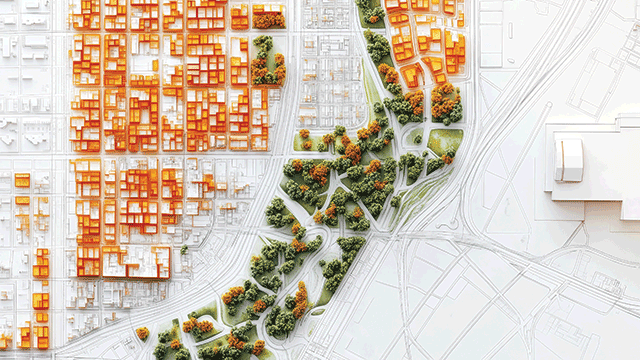COMMENT Covid-19 accelerated change across the real estate sector which, coupled with varying consumer demands, supply shortages, or current stock not meeting consumer needs or legislative requirements, will have long-term industry implications.
There is no panacea, with cities experiencing very different challenges for the real estate sector to address. Much is said about the importance of collaboration between public and private sectors to invest in cities and to meet demands and deliver cities of the future. Use of predictive data is key to successfully delivering cities and metropolitan areas to drive economic investment while addressing a shortage of housing.
There is a wealth of data available – for example, on housing needs, footfall, empty units, EPC rating challenges, and occupancy in local schools and nurseries. This data needs to be used to inform decisions on local needs and buildings’ purposes, particularly when repurposing is required, with more and more emphasis on mixed use.
This data can be used to predict trends and demonstrate proof of concept, allowing collaboration on successful delivery. The predictive nature of the data is essential. Too often development decisions are made or planning consent rejected without consideration of likely future demand patterns. This can result in flagship properties lying empty or having to be demolished, with significant carbon implications.
Data sets must be carefully considered to ensure they are representative of the local area; what applies in Aberdeen is unlikely to be relevant to Glasgow, for example. Glasgow has a high rate of student retention, with Centre for Cities noting that almost half the people who study there stay for work post-graduation and this is therefore likely to drive future demand for family homes. Glasgow is consistently ranked in the top three leading tech cities outside London and typically the technology sector attracts European workers who often relocate with their families, increasing the need for larger homes and office space to attract the highest calibre of employees. An example is the new Barclays Campus in Glasgow, which accommodates 5,000 employees.
The integrity of any data set must be subject to challenge, with surveys being recognised as critical tools to provide further evidence to support future trends based on individuals’ future plans.
While there is so much data available to drive build decisions, this isn’t utilised to determine the nature of the build. Typically project decisions are based on fit with the developer and its previous work, resource and skill sets, and profit maximisation. At the moment, the divide between local authorities and private developers is vast, with very different agendas. Successful use of data for collaboration and innovation could help bridge this gap to meet demand while ensuring appropriate returns for all parties.
Mixed-use developments create significant opportunities within city centres and focus is increasingly on these builds to change the footprint of our cities and attract people back or encourage relocation. In planning for mixed-use developments there are a significant number of stakeholders and therefore the challenge is identifying data which will support wider decision-making. How this information is shared and used to inform decision making will be key. Cross-stakeholder working parties are critical to ensure appropriate and measured consideration of the longer-term objectives for city centre planning – this might see developers link with universities, local authorities, key employers, and transport providers to ensure full party involvement.
An example of such collaboration to deliver long-term common goals is the public/private tax increment model used to fund the Tube extension to the Battersea Power Station development in London, the success of which was dependent on accessibility and connectivity. The public sector was able to borrow against the value of the land being developed, with repayment financed over 25 years by the private sector using additional enterprise zone business rates and contributions from the key developers. Such collaboration and ingenuity is not typical in the sector and requires significant forward focus and a shared vision.
Planning departments also need to engage in this process at an early stage to ensure that envisaged projects can be delivered and the UK considered best-in-class in addressing the city centre landscape of the future.
Local planning departments and current Scottish and UK governments receive much criticism for not supporting development needs. National Planning Framework 4 is not working in Scotland and there are too many barriers to delivering the type of projects which could fundamentally change cities.
Short-termism is significantly impacting the UK. Singapore, by contrast, has a 20-year infrastructure and development plan and pushes on with this regardless of macro changes. Could data be the answer to the UK focusing on long-term needs and delivering cities of the future to compete on a global scale?
Claire Monaghan is head of real estate and construction, Scotland, at RSM











